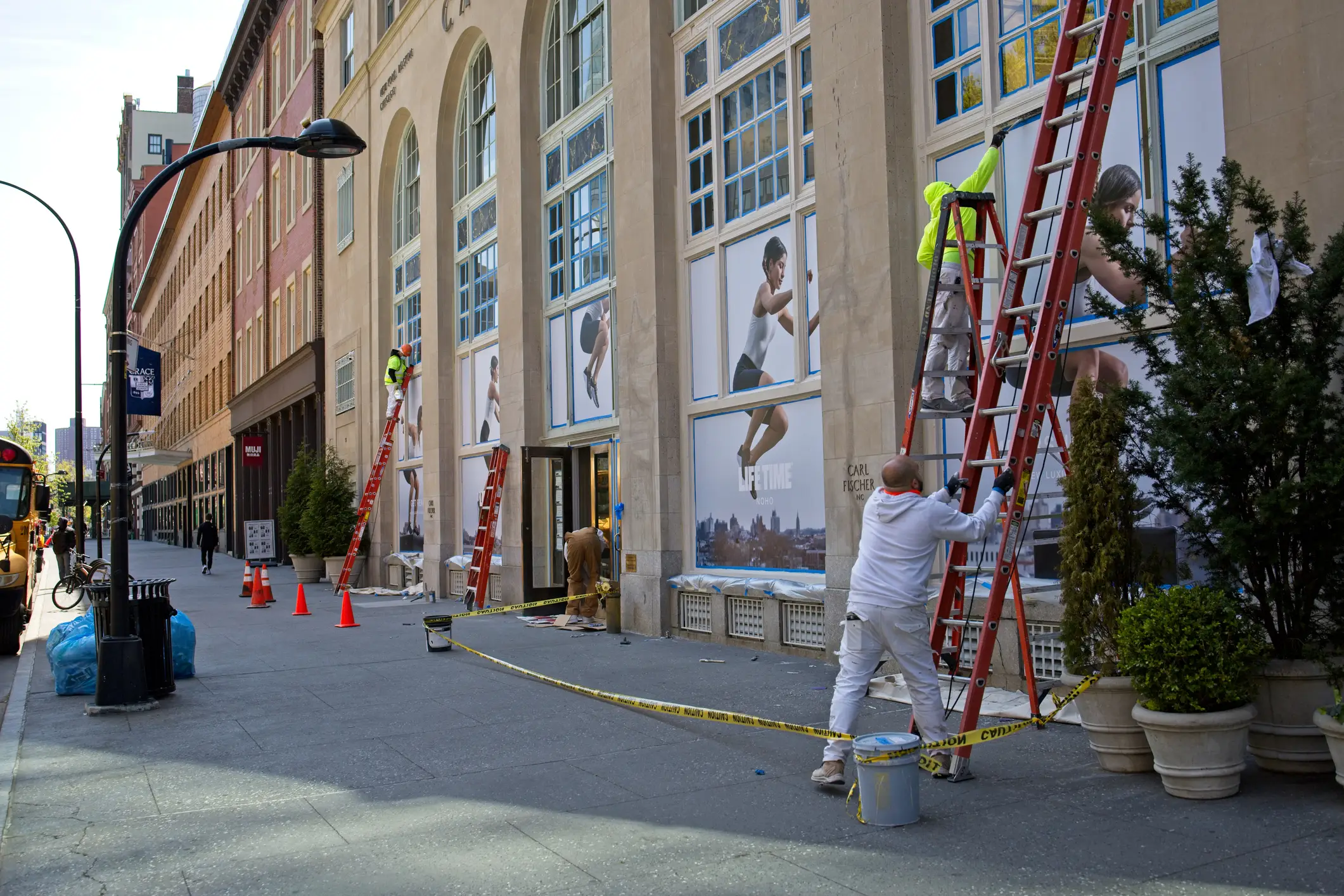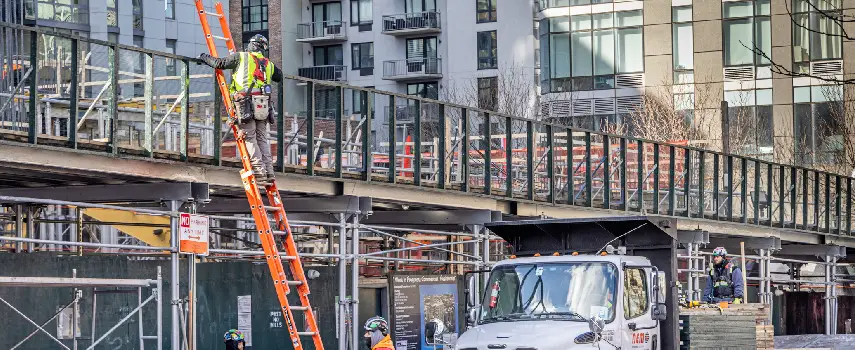Even though ladders are one of the most commonly used pieces of equipment on New York City construction sites, they’re also one of the most common causes of construction accidents, injuries, and deaths. New York has taken proactive measures to encourage safe ladder use and prevent these types of accidents. Here’s what you need to know about New York’s ladder laws if you work in construction, demolition, or other related trades.
New York Ladder Safety Training
Since construction is such an inherently dangerous industry, New York City requires many construction workers to receive specialized safety training. Under Local Law 196 of 2017, construction workers on large-scale projects are required to obtain a Site Safety Training (SST) card. To get an SST card, workers have to receive at least 40 hours of training in construction-related safety protocols and practices – which can include a course on proper ladder use.
NYC SST-110, known as the 1-Hour Stairways and Ladders course, is a one-hour online program designed to educate construction workers and construction supervisors on safe ladder practices on construction sites. Workers can learn about:
- Ladder safety regulations
- Types of ladders
- Proper ladder use
- Ladder maintenance and inspection practices
- Safe ladder practices
Construction workers who complete SST-110 should be able to know which ladder to choose for a specific task, how to identify potential hazards, and how to comply with New York ladder regulations. Once an SST card has been obtained, it’s valid for 5 years. Construction workers and site supervisors must renew an existing SST card within 12 months of the date of expiration to remain compliant.
NYCRR § 23-1.21 – Ladders and Ladderways
While New York City encourages ladder safety training, New York State has specific rules and regulations in place for ladder use on construction sites. New York Codes, Rules and Regulations § 23-1.21 establishes general ladder requirements and imposes certain limitations for extension ladders, sectional ladders, step ladders, and single ladders.
Ladder Strength
Ladders must be able to sustain at least four times the intended maximum load without loosening or breaking.
Ladder Maintenance and Replacement
Ladders have to be maintained in good working condition, and cannot be used if:
- Any part of the ladder is broken or unsecured
- The ladder suffers from a defect that could cause failure, or
- Wooden rungs are so worn down that they no longer equal three-quarters of their original thickness.
Regular ladder maintenance and inspections are critical in identifying potential hazards that could render the use of a ladder unsafe and a violation of New York law.
Ladder Footings, Placement, and Securement
Ladders are most secure when placed on solid, level surfaces. New York’s ladder law prohibits ladders from being placed on “slippery surfaces” or “insecure objects such as bricks and boxes.” Any ladder with spreading bases must be equipped with locking mechanisms to ensure maximum stability. When using a leaning ladder:
- The ladder must be (a) held in place by a person at the bottom, (b) secured against side slip by its position, or (c) secured by mechanical means at the top when work is performed between 6 to 10 feet above the footings.
- The upper end must be mechanically secured against side slip when leaned against a slippery surface.
- The ladder must not sag under the expected maximum load.
Ladders used to move between floors or levels have to be securely fastened, extend at least 3 feet above the upper level, and incline no more than 3 inches for each foot of rise. No ladders may be placed in doorways or door openings unless the door is closed and secure.
Ladder Splicing
Ladders can only be spliced to add guardrails to the upper ends of the tool for use as handholds. All other splicing is prohibited by New York’s ladder laws.
Metal Ladders
Metal ladders are prohibited in any area where they might come into contact with live power, electric equipment, or exposed electrical wires
Extension Ladders
Extension ladders cannot be longer than 60 feet when fully extended and cannot be made up of more than three sections. State law sets minimum overlap requirements, based on the ladder’s length:
- Ladders up to 36 feet: 3 foot minimum overlap
- Ladders between 37 and 48 feet: 4 foot minimum overlap
- Ladders over 48 feet: 5 foot minimum overlap
All sections of an extension ladder must be secured in place during use by automatic positive-acting locks.
Stepladders
Stepladders can only be used on New York City construction sites if:
- Steps and treads are at least three inches deep
- Built-in pail shelves can be folded into the ladder
- Metal steps must be manufactured and/or treated specifically to minimize slips and falls
Any time a step ladder is used, it must be opened fully with its spreader locked into place to make it as strong as possible
Ladderways
If a ladderway exceeds 70 feet, rest platforms must be placed at regular intervals no more than 35 feet apart. Ladders should be staggered if it can help to reduce the risk associated with falling debris, materials, or tools.
What if My Employer Violates New York Ladder Laws?

New York’s ladder laws are specifically designed to encourage safe ladder practices and reduce the number of workers who suffer avoidable injuries and deaths in ladder-related accidents.
However, not all employers are familiar with New York’s ladder regulations. Others don’t care.
If your employer provided you with an unsafe ladder, required you to use the wrong type of ladder for the job, or violated New York’s ladder regulations under § 23-1.21 in some way, and you got hurt, it’s important to explore your legal rights and options. You might be entitled to workers’ compensation benefits or, in some cases, have the right to file a personal injury lawsuit for damages.
While suing your employer is typically off-limits if workers’ compensation applies, you might have the right to hold them accountable if they violated the law and/or your injuries are defined as “grave.” Additionally, you could have the right to sue a liable third party – such as a co-worker, another contractor, or even the ladder manufacturer.
If you’ve been injured in a ladder accident in New York City, New York, call The Platta Law Firm to discuss your case. Our New York construction accident attorneys have 150+ years of combined experience litigating high-stakes civil disputes. We don’t just win cases for our clients – we set records and shape New York labor law in the process, too. We offer a free consultation, so call our NYC law office at (212) 514-5100 to discuss your ladder accident case today.


